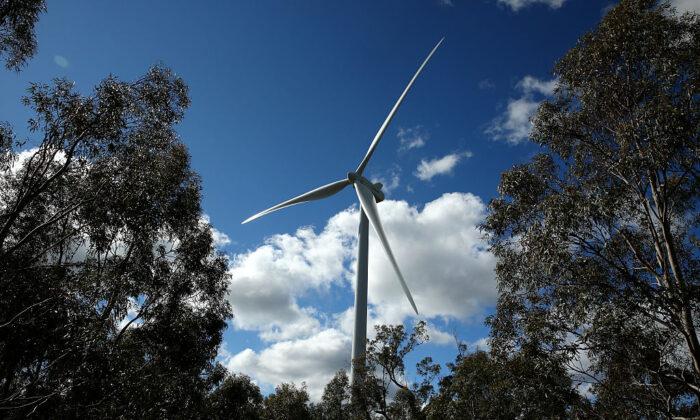A new renewable energy deal has put the wind in the sails of Australia’s largest supermarket, Woolworths, promising to supply 30 percent of the food giant’s New South Wales (NSW) energy needs.
The contract will see the transfer of 195,000 Megawatt-hours from Bango Wind Farm to 108 outlets in NSW—equivalent to powering 34,000 homes—every year.
The undisclosed investment will foot the bill for 10 years worth of energy in advance, part of a power purchase agreement with the wind farm’s developer, Australian-owned CWP Renewables.
Woolworths plans to transition to 100 percent renewable energy by 2025, already brandishing solar panels on the roofs of 140 stores, out of a total 995 stores it owns nationwide.
Woolworths Group, which is also responsible for Big W department stores, aims to achieve “net carbon positive” by 2050, meaning that the conglomerate will eventually seek to output more energy into the grid than it supplies.

McCartney said that supermarkets require a substantial amount of power to operate on a daily basis, making the stores a prime target for renewable energy support.
“Supermarkets are particularly energy-intensive to run, and we want to use our scale for good by supporting the transition to renewable electricity.”
NSW Minister for Energy and Environment Matt Kean supported the decision, particularly for its contribution to both supporting jobs and increasing the state’s renewable energy supply.
“This is great news and further proof that the NSW electricity infrastructure roadmap is providing the certainty to businesses and energy market investors to make financial decisions that will help power our state into the future,” Kean said.

“I am fully supportive of all energy market investment in NSW, but this partnership and agreement is particularly significant because it is prioritising the building of new infrastructure, providing for local jobs and investment and helping us grow our renewable energy base.”
Bango Wind Farm, which is set to be the third-largest in the state when completed in late 2021, is located 30 kilometres outside of Yass NSW and, when complete, will provide an output at a maximum capacity of 244 MW.
“No one disputes the energy system should transition to more cleaner sources; we are actively pursuing renewables like wind, solar and hydro,” Tomago chief executive Matt Howell said. “But the fact remains there are substantial parts of the day and night, particularly in winter, where the dispatchable generation is not there.”





